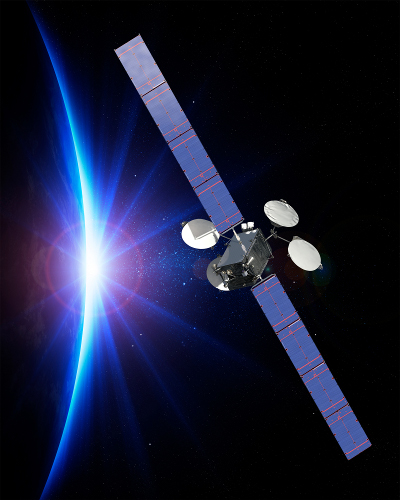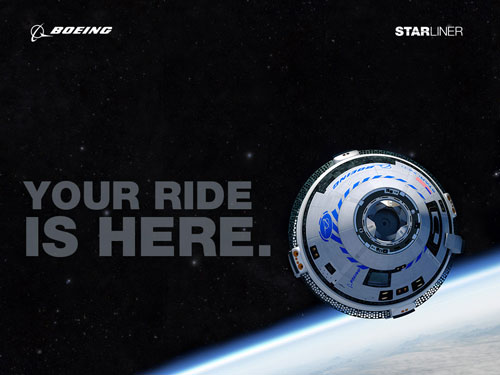Boeing Space Aircraft & More
Boeing has been around almost from the very birth of human aviation. It is already over a hundred years old, having been formed back in the days of wooden framed propeller powered bi-planes in 1916. It has been a world leader, at the forefront of the aviation industry ever since. Today it is without doubt the largest aerospace company on the planet.
This American corporation has achieved so much that it is difficult to know where to start, but why not begin with the fact that it is responsible for perhaps the most successful airplane in the history of aviation – the Boeing 747. Better known as the “Jumbo Jet”, it first rolled off the production line more than fifty years ago in 1968, and remains the most successful wide bodied long haul airliner to this day. It also manufactures several other long and medium haul aircraft, such as the 737, 777 and now the iconic 787 “Dreamliner”.
But although aircraft are what Boeing is best known for, there is far more to this company than just big passenger jets. In fact, its commercial aircraft division is just one of three major revenue earners for this mega corporation. It is a major defence contractor for the United States government, and designs, manufactures and sells military aircraft, helicopters, missiles and other weapons to approved national governments across the world.
It is the third sector of business that Boeing is focused on which will be of most interest to readers here though – it is a major player in the space technology industry. In the United States, we tend to associate NASA with all things to do with American operations in space, but NASA is really the administrator. Much of the manufacturing is now subcontracted, and Boeing is a major customer and contributor to the American space industry.
Boeing in Space – A Brief History
It is Boeing which is one of the major names behind the Global Positioning Satellite (GPS) network which many of our satellite navigation systems and mobile apps use to tell us where we are on the world’s surface. Boeing began building the satellites involved in the system back in 1978 and it has constructed more than forty in total, representing more than two thirds of all the GPS satellites which have been launched. The GPS system covers the entire planet from its satellites’ geo-stationary orbit some 12,000 miles above the Earth. The system has recently been upgraded to a new superior specification – GPS IIF. This has improved its accuracy still further, and offers enhanced services to partner military organisations and some civil operators.
The company designs other satellites too. Its 702 model is so flexible it can be customised to whatever the needs of its customers may be. First produced in 1995, there are currently more than twenty still in operation in a variety of orbits, with orders for a further dozen already in production.
Boeing has also been a major contributor to the design, construction and maintenance of the International Space Station (ISS). Involved from the very beginning, the company is responsible for a significant proportion of the on board equipment and is also behind the design and manufacture of the station’s new docking system, which is designed to be compatible with all spacecraft conforming to the new international standard.

Boeing in Space – Current Operations and Plans
Boeing is also at the forefront of new developments in the space industry. The headline project which the company is working on is a collaboration with NASA and commercial operator Bigelow Aerospace to develop the new CST-100 Starliner crew capsule.
This entirely new concept is designed to be able to carry up to seven astronauts to and from the ISS, and in the future, to Bigelow’s own planned private space stations. This flexible capsule is planned to be compatible with four different rocket launch system and is able to remain in orbit for up to seven months before requiring a return to Earth. It is also able to be re-used up to ten times before requiring replacement.
The capsule is already constructed, but technical problems have delayed any trial launches for the time being. However, test launches and a crew carrying demonstration flight are still expected before the end of 2019. NASA intends to use the capsule to ferry astronauts and supplies to and from the ISS, ending its current reliance on the ageing Russian Soyuz service. A brand new “Boeing Blue” spacesuit is also being designed for the astronauts to use while on board.
Boeing is collaborating with NASA on other projects too. It is a major contributor toward the design and development of NASA’s new rocket, the Space Launch System (SLS). This will be the most powerful rocket yet built, surpassing the previous record holder, the Saturn V which was used to launch the Apollo astronauts on their way to the Moon. The rocket is intended for use in lifting heavy payloads into Earth orbit, and to be able to launch astronauts, payloads and cargo beyond the Earth and into deep space. It could potentially be used for future Moon mission, or even to propel astronauts to Mars.
It is not just NASA that the company has partnership agreements with. It is also a joint member of the United Launch Alliance (ULA), a joint venture with rival aircraft, defence and space technology company Lockheed Martin. This collaboration has already resulted in the development of the Delta IV and Atlas V rockets, which have already launched in more than a hundred satellites into orbit. Further enhancements and maybe even new rocket designs are planned.
Meanwhile, Boeing has been contracted to by the U.S. Defence Advanced Research Projects Agency to design a new, re-usable Spaceplane. This new concept craft, called the Phantom Express, certainly looks futuristic, and is intended to be able to launch small payloads and satellites directly into space. At just 30 metres long, this pilot-less space plane will be launched like a rocket, then deploy its payload into orbit via an upper stage, which would detach before releasing its cargo into orbit. The Spaceplane would then return to Earth, landing on a conventional runway.
This new concept has the potential to revolutionise the satellite launch industry. Its re-usability, the fact the it doesn’t require a human pilot and its flexible launch and landing ability means that it could provide future governments and commercial operators with an almost airliner like service into space.
It all sounds very futuristic, but plans are well underway and the manufacture of components has already begun. Both the hydrogen and oxygen fuel tanks for the new Spaceplane are expected to be completed by the end of 2019, so we can expect to see a launch within the next few years.
Boeing in Space – The Future
The future is bright for this American megacorp. It is perhaps surprising that this world famous company has been outshone in the publicity stakes by brash “new kids on the block” rivals like SpaceX and Virgin Galactic. But Boeing is an old school leviathan which feels no need to join in the PR hungry fame game played by the likes of Elon Musk and Sir Richard Branson. It has a century of experience in the aviation and aerospace industry, plus the backing of NASA and the United States’ armed forces.
This co-operation with NASA will soon bear fruit as the US Government agency announced in June 2019 that it will soon be commencing private flights to the International Space station (ISS). These new astronaut tourists will be ferried to the ISS under NASA’s Commercial Crew Program, on which Boeing’s Starliner crew capsule has a starring role.
NASA indicates that these flights could begin as soon as 2020 if the Starliner’s test launches continue to go as planned. Initially, two flights a year are planned. These are expected to increase as the agency works toward effectively privatising the ISS. The space station is expected to be free of US government funding by 2025 as revenues are retargeted on NASA’s new priorities – first the Moon, then Mars.
This means that we can expect to see the new Starliner crew capsule in operation ferrying NASA astronauts and others to the International Space Station very soon, possibly as soon as 2020.
Further ahead, we could be seeing the Phantom Express fly into space within the next decade. And after a few successful trips to the ISS, maybe we will also soon see commercial passengers making their way on a Boeing Starliner to one of Mr Bigelow’s new space hotels. It could all be happening a lot sooner than you think…

